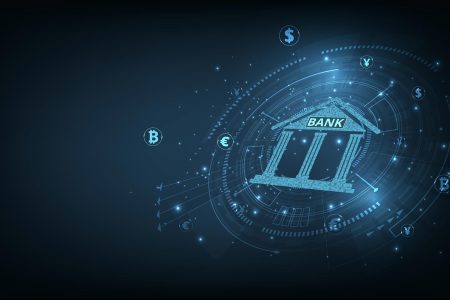If you’re reading this, you’ve probably come across some of the recent turmoil within the United States banking system. Most notably, we’ve seen the collapse of several notable banking institutions, which include the likes of Silicon Valley Bank, Silvergate Bank and Signature Bank.
To date, the overwhelming majority of the blame for these recent failures has been assigned to the excessive risk and volatility associated with the emerging cryptocurrency (crypto) industry and early-stage companies when in all actuality, the primary driver of these failures stems from an age-old flaw of our banking system. Specifically, the bank failures of today were somewhat predestined, given bank runs are a known, well-understood threat to the health of any fractional reserve banking system.
Now, more than ever, is the time for the American people to fight to lessen our archaic banking system. After all, we’re the ones who suffer the most, not the ultra-wealthy.
Related: Why the American Dream is Dead
What is a fractional reserve banking system?
In the simplest of terms, a fractional reserve banking system allows banking institutions to lend out a certain percentage of the customer deposits that sit on the bank’s balance sheet. The reason why a bank might do this is simple: free money. For a nominal interest rate due back to its depositors, banks are able to borrow funds and generate substantial returns from a myriad of investments. You might ask what regulations are in place to ensure that your money is there should you choose to initiate a withdrawal, so let’s go through a quick history lesson.
In 1913, the Federal Reserve Act set out to accomplish a couple of key items:
- Creation of the Federal Reserve Banks (in aggregate, the Federal Reserve System)
- Set minimum reserve requirements for banks (set at 13%, 10% or 7%, depending on the type of institution)
Fast forward to mid-century, and minimum reserve requirements increased marginally (up to 17.5% for certain banks) before settling within the 8-10% range from the 1970s to the 2010s. Most recently, in 2020, reserve requirements were abolished and replaced with the Interest on Reserve Balances (IORB) system, where banks were paid interest for funds that sat on their balance sheet, incentivizing them to lend fewer customer deposits. Crazy, right?
In case you’re wondering how much interest banks were paid for sitting on customer deposits, it was 0.15% (or 15bps) from 2020 until early 2022, when the Federal Reserve started to hike rates. See where I’m going with this? In a world where shareholders are in constant search of yield, the opportunity cost of sitting on reserves when the S&P 500 (or even real estate) pays high single-digit returns on an annual basis incentivizes risk-taking, which benefits the nation’s elite at the expense of deposits (everyday Americans).
Related: You Might Not Know That You’re a High-Risk Customer for Mainstream Banks
What you’ve been told
One important item to note is that fractional reserve banking systems don’t solely benefit banking institutions. In fact, fractional reserve banking is one of the biggest drivers of economic growth — businesses can scale and produce more products while consumers can more easily access capital. Credit cards, mortgages, auto loans and small business loans are all made possible by the reshuffling of customer deposits. It’s genuinely one of the greatest innovations of modern finance; however, it doesn’t come without its risks. Unfortunately, many of those risks aren’t well known to the general public.
More likely than not, you’ve been told to ‘rest assured’ that the banking system is ‘fine.’ More likely than not, you’ve been told that the biggest risk to the United States financial system is the crypto industry. More likely than not, you’ve been told that decentralized frameworks are breeding grounds for fraudulent activity when in all actuality, it’s the centralized nature of our banking system that enforces the need for consistent over-regulation due to incentives that always seem to be misaligned.
Fractional reserve banking is a key pillar that brought us into the 21st century, but with how much the economy has grown over the past century, we must start to migrate to new banking frameworks. In particular, frameworks that better mitigate excessive risk-taking and function whether or not the general public trusts it.
Related: Bank Problems = Bearish Thumb on Stock Market Scale
What you need to hear
Banks are centralized organizations with the sole mission of increasing profits, and within centralized infrastructures, checks and balances are often put aside in exchange for speed and efficiency. Shareholders pressure banks to produce profits while banks pressure regulators and lawmakers for looser regulation which forces an infinitely small subset of people to make some tough decisions that impact the well-being of the common person who, by the way, knows very little about what happens to their money as soon as they deposit a paycheck.
For this system to work, the common person must put immense trust in the powers that be to good actors. Should depositors at scale initiate withdrawals, banks are at risk of not having enough funds to process requests. And because there’s minimal visibility in a bank’s position at any given time, Americans are forced to blindly trust that their money will be there when they need it.
Crypto and, more specifically, self-custody solves this problem as your assets truly become your assets when you custody them yourself. Decentralized ecosystems completely eliminate the risk of a bank run but also eliminate the most efficient financing that a bank could ever get. And I already know what you might be thinking: “What about credit cards and mortgages?” Decentralized finance, or ‘DeFi’ for short, ushers in a new paradigm where these types of transactions can be facilitated through smart contract logic that is auditable and public.
The threat the crypto industry poses to the traditional financial system is palpable. Because of that, we’ve been, nefariously, sold the narrative that crypto enables fraud when in reality, it’s hard to commit a financial crime in crypto frameworks because every event is public and lives on the blockchain.
Moreover, the media often fixates on the financial crime that does occur within the crypto industry, as evidenced by the fixation and coverage of the Sam Bankman-Fried and FTX fraud cases. Ironically, traditional banks have cases outstanding that dwarf the financial fraud that has occurred within the crypto industry. Moreover, it’s because of centralization and opacity that lives within the traditional banking system that allows for implicative decisions to be made, which in turn, hurts those who partake in the system.
Conclusion
Now, more than ever, it is time to be skeptical about the ways in which we live our daily lives. For the longest time, we’ve been forced to assume the risks that come with traditional finance because of a lack of better financial systems. And as with any major structural change, friction and great resistance is to be expected. After all, despite being a multi-trillion dollar problem on our hands, the United States financial system is also a trillion-dollar market opportunity that could shrink materially should crypto and other decentralized frameworks be implemented. TLDR: traditional finance won’t go down without a fight.
That said, it’s on us to protect ourselves, and the first step we can take toward financial freedom is education – do your best to learn more about what’s at stake while raising awareness among those around you. If you want to go fast, go alone. If you want to go far, go together.
Read the full article here










